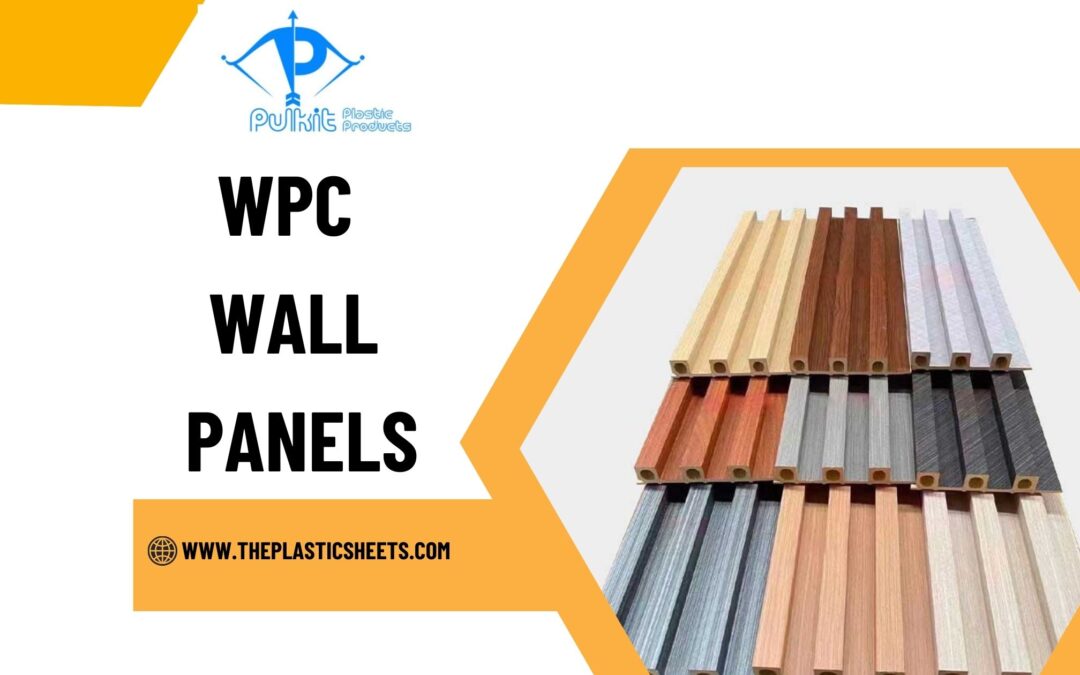Wood Plastic Composite (WPC) wall panels have gained immense popularity in modern interior design due to their durability, aesthetic appeal, and ease of installation. These panels combine the beauty of wood with the resilience of plastic, making them an ideal choice for both indoor and outdoor applications. This guide will provide a comprehensive step-by-step process for installing WPC wall panels in your home, along with answers to frequently asked questions.
What Are WPC Wall Panels?
WPC wall panels are made from a blend of wood fibers and plastic materials, offering a lightweight yet sturdy alternative to traditional wooden paneling. They are resistant to moisture, pests, and decay, making them suitable for various environments, including bathrooms, kitchens, and Outdoor Paneling For Walls spaces. Additionally, WPC panels come in various designs, colors, and finishes, allowing homeowners to customize their interiors easily.
Benefits of WPC Wall Panels
- Durability: WPC panels are resistant to warping, cracking, and fading, ensuring that they maintain their appearance over time.
- Low Maintenance: Unlike traditional wood panels that require regular staining or sealing, WPC panels can be easily cleaned with soap and water.
- Eco-Friendly: Made from recycled materials, WPC panels are a sustainable choice for environmentally conscious homeowners.
- Aesthetic Versatility: Available in various designs and finishes, including wooden fluted panel styles, WPC panels can complement any interior decor.
Step-by-Step Installation Guide
1: Gather Your Materials
Before starting the installation process, ensure you have all the necessary materials:
- WPC wall panels
- Measuring tape
- Level
- Pencil
- Circular saw or jigsaw
- Drill and screws
- Adhesive (if required)
- Safety goggles
- Gloves
2: Measure the Wall Area
Begin by measuring the area where you plan to install the WPC panels. Use a measuring tape to determine the height and width of the wall. This will help you calculate how many panels you need and how to cut them to fit.
3: Prepare the Wall Surface
Ensure that the wall surface is clean, dry, and free from any debris. If you are installing the panels over drywall or plaster, check for any imperfections or damage that may need repair before proceeding.
4: Cut the Panels
Using a circular saw or jigsaw, cut the WPC panels to the desired size based on your measurements. Always wear safety goggles and gloves while cutting to protect yourself from splinters and debris.
5: Mark Guidelines on the Wall
Using a level and pencil, mark guidelines on the wall where the top edge of each panel will be placed. This ensures that your panels are installed straight and evenly aligned.
6: Install the First Panel
Start at one corner of the wall. If using adhesive, apply it to the back of the first panel according to the manufacturer’s instructions. Press the panel firmly against the wall along your marked guideline. If using screws instead of adhesive, drill pilot holes through the panel into the wall studs for secure attachment.
7: Continue Installing Panels
Repeat the process for each subsequent panel. Ensure that each panel is aligned with the previous one by using a level. Depending on your design preference, you may choose to stagger joints for a more natural look.
8: Trim Excess Material
Once all panels are installed, trim any excess material at the edges using a saw. This will help create a clean finish along corners and edges.
9: Add Finishing Touches
To complete your installation, consider adding trim or molding around windows, doors, or baseboards for a polished look. This not only enhances aesthetics but also covers any gaps or imperfections at the edges of your panels.
Maintenance Tips for WPC Wall Panels
- Cleaning: Regularly wipe down your WPC panels with a damp cloth and mild soap to remove dust and stains.
- Avoid Harsh Chemicals: Do not use abrasive cleaners or solvents that could damage the surface finish.
- Inspect Regularly: Periodically check for any signs of damage or wear and address them promptly to maintain appearance.
Conclusion
Installing WPC wall panels can significantly enhance your home’s interior while providing long-lasting durability and low maintenance requirements. By following this step-by-step guide and considering FAQs regarding pricing and application suitability, you can confidently undertake this home improvement project. Whether you opt for stylish wooden fluted designs or other contemporary finishes, WPC wall panels are an excellent investment for any homeowner looking to elevate their living space’s aesthetic appeal.
When looking for quality WPC wall panels in India, consider reputable manufacturers such as Pulkit Plastic Products that offer a range of durable options suitable for various applications.
Frequently Asked Questions (FAQ)
1. What is the average wood panel price for WPC wall panels?
The price of WPC wall panels can vary widely based on quality and design but typically ranges from ₹150 to ₹500 per square foot in India. It is advisable to compare prices from different suppliers before making a purchase.
2. Can I use WPC panels for outdoor applications?
Yes! WPC wall panels are suitable for outdoor paneling due to their resistance to moisture and UV rays. They can be used in patios, balconies, or garden walls without significant degradation over time.
3. What is the wooden fluted panel price compared to WPC?
Wooden fluted panels generally range from ₹200 to ₹600 per square foot depending on wood type and finish. In contrast, WPC offers a more cost-effective solution with similar aesthetics but greater durability.
4. How do I choose between wooden fluted panels and WPC?
Your choice should depend on your specific needs:
- Aesthetics: Wooden fluted panels offer a classic look but may require more maintenance.
- Durability: WPC is more resistant to environmental factors like moisture and pests.
- Budget: Compare prices; often, WPC is more economical in terms of long-term maintenance costs.
